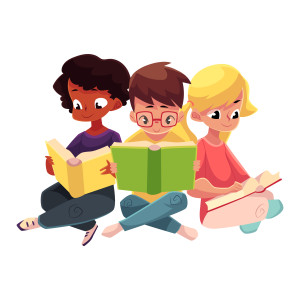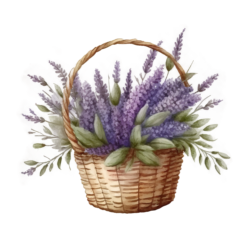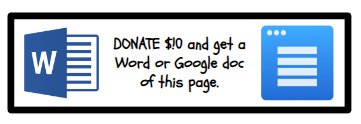Reading Comprehension Strategies
Teachers – see also Reading Strategy Objectives and Mentor Texts for Reading Strategies!
Check out this AWESOME link:
Comprehension Questions for Leveled Texts
 VectorStock Images
VectorStock Images
Monitor/Clarify
Why do I Monitor/Clarify?
- To make sense of my reading.
When do I Monitor/Clarify?
- When the reading no longer makes sense
- When I am stuck on a word’s meaning
How do I Monitor/Clarify?
- Reread all around the word or area in question. Make substitutions, and use picture clues.
- Use my schema or background knowledge.
- Study the structure.
- Predict, infer, make connections, ask questions, and summarize.

Reading Comprehension Strategies
Predict
Why do I Predict?
- Gets my mind ready to read
- Gives me a purpose to read
When do I Predict?
- Before and during reading
How do I Predict?
- Think about the title; look at the cover and pictures.
- Think about the text structure.
- Use what I know.
- Ask questions ~ I wonder. . . Who is. . . Why is. . .
- Adjust my predictions as I read.
- Predictions may or may not be proven.

Make Connections
Why do I Make Connections?
- Reading is thinking! Good readers make connections between text to self, text to text, and text to the world.
- To better predict and understand the text because of what I already know ~ how the characters feel, what may happen based on another text. . .
- T-S means more to me because it reminds me of my own life. Everyone has a different schema and experiences, which can be shared to help me understand more.
When do I Make Connections?
- Before, during, and after reading.
- Make connections when I’m figuring out unknown words!
- When I am reminded of a similar event
- T-S: That reminds me of . . . I remember when . . . An experience I have had like that is . . . I felt like that character when . . . If I were that character, I would . . . .
- T-T examples include:
Content ~ I’ve read another book on this topic
Genre~ this is a “mystery” (etc.) like the Cam Jansen series
Author ~ this author always. . .
Illustrator ~ I recognize these pictures by. . .
Setting ~ ___________ took place at the same location as
Characters ~ they remind me of. . .
Illustrations ~ remind me of . . .
Plot ~ this story is like. . .
Structure ~ this story has a literary device (like a flashback) like. . .
Theme ~ this book had the same lesson as . . .
Language ~ the writer’s language reminds me of. . .
Tone ~ this book has the same feel as. . .
- T-W on nonfiction ~ open our mental files and make connections between what we know about the world and the new information
How do I Make Connections?
- Chart connections. What connections helped to understand the story, which didn’t?
- Venn diagrams
- Connect to the theme or main idea of the text
- Start with “It helps me understand . . .” (Character feelings, setting, events)
- Activate prior knowledge before, during, and after reading.
- On nonfiction (T-W), make a KWL chart. Do T-W with newspaper articles, also.
- Use a double-entry journal ~ one side is for key events, ideas, words, quote, or content. The other is for connections.
- Always ask, “How does this connection help me understand the text?”

Reading Comprehension Strategies
Infer
Why do I Infer?
- Authors describe characters’ feelings, events, setting. . . I have to infer to understand.
- To draw conclusions, make predictions, and reflect on my reading
- To determine the meanings of unknown words
When do I Infer?
- Before, during, and after reading.
- In life, I infer with my 5 senses ~ What is making that noise? What is cooking? How is that person feeling? What is this sharp object? What does a cake with candles on it mean?
- When the author doesn’t answer my questions, I must infer by saying: Maybe. . ., I think. . ., It could be…, It’s because…, Perhaps…, It means that.., I’m guessing…
How do I Infer?
- Look at the picture.
- Think about the character’s behavior.
- Ask questions as I read. Some of my questions are answered in the text; others are not and must be inferred.
- I use my prior knowledge plus the text clues to draw conclusions.
What do I Infer?
- Meaning of unfamiliar words
- Setting
- Explanation for events
- What is the character feeling
- What pronouns refer to
- Author’s message
- Answers to my questions when they are not directly stated
Fun Inferring Practice! Read these sentences, and have a discussion about the character, setting, and draw conclusions.
-
Sue blew out the candles and got presents.
-
Mary plays her flute for two hours every day.
-
The boat drifted in the middle of the lake.
-
John ran into the street without looking.
-
Meg was the star pitcher, but she had a broken finger.
-
We bought tickets and some popcorn.
-
I forgot to set my alarm clock last night.
-
When I woke up, there were branches and leaves all over the yard.
-
Yesterday, we cleaned out our desks and took everything home.
-
Everyone stopped when the referee blew the whistle.

Ask Questions
Why do I Ask Questions?
- To clarify, wonder, determine the author’s style or intent, better understand when the reading gets confusing, monitor my reading, synthesize new information, and determine the importance.
- To stay actively involved in the reading
- To read with a purpose
- To deepen comprehension (Thick vs. Thin Questions)
When do I Ask Questions?
- Before, during, and after reading, I look at the cover and title and begin asking.
- When I use the strategies: Is my prediction good, or do I need to change it? What am I visualizing? Do I need to change my mental image? What’s happened so far? Does this remind me of anything?
- I need to ask more questions if I lack background knowledge.
- Hearing other people’s questions inspires more of my questions.
- As I read, does it make sense?
- Just go outside ~ what questions do I have about nature? What questions do I have about a painting or illustration?
- To coincide with the Reading CAFE, I ask myself who/what after each paragraph to monitor my reading. I reread if you cannot state who/what the paragraph is about.
How do I Ask Questions?
- Start by using a wordless book ~ what questions do I have?
- Many of my questions are predictions before and as I read. My “after the book has been read” questions are thought-provoking.
- Create an “I Wonder” chart before, during, and after the story. Which questions were answered? Which had to be inferred?
- There are 3 types of questions ~ Predicting Questions move me forward, Monitor Questions pull me back, and Thinking Questions make me infer
- Questions start with who, what, where, when, why, how, would, could, should, do, does, and did.
- What happened? Why did it happen? Think about cause and effect.
- Thick questions deepen my comprehension, and thin questions can be found in the text.
- Questions can relate to the text type ~ narrative, expository, technical, persuasive, or text structure ~ sequence, problem/solution, cause/effect, descriptive, or compare/contrast.
- I use connections to help me ask meaningful questions.
- Ask ~ What does my question do for my reading?
- Begin with a KWL chart for nonfiction texts.
- TEACHERS: Give students a list of answers. THEY come up with the questions ~ like Jeopardy!
How do I answer Questions?
- A – answered in the text, BK – answered from someone’s background knowledge, I – inferred, D – discussion, RS – research needed C- signals confusion.
- I use interpretation, pictures, and re-reading.
Types of Questions
- Does the question start with What did… Who did… How many… What was… Who are… What does ___ mean? Define… What kind… – then the answer is RIGHT THERE in the text.
- Does the question start with: How do you… How did… What… What happened to… What happened before/after… How many times… What examples… Where did… – then I must THINK and SEARCH for the answer. The answer is found in different parts of the story. Words to create the question and answer are not in the same sentence.
- Does the question start with: Have you ever… If you could… If you were going to… In your opinion… Do you agree with… Do you know anyone who… How do you feel about… – then, I am on my OWN, and I need to think about the answer. The answer is NOT in the story.
Questions to think about
- What is the author trying to tell me?
- Why did the author write this book?
- Is the title appropriate? What is my evidence?
- What did the character learn?
- Who/what is each paragraph about?

Reading Comprehension Strategies
Summarize
Why do I Summarize?
- To identify and organize important information.
- To check understanding in a brief way
- To find the main idea and problem/solution
- To put the story in order
When do I Summarize?
- When reading, giving game instructions, chatting about the weekend, explaining newspaper articles. . .
- Before, during, and after reading
How do I Summarize?
- In my own words
- Before I read, I preview how the text is organized by looking at the cover, table of contents, and illustrations.
- During reading, I keep a graphic organizer and jot down what has happened
- After reading, I skim the text and determine the most important parts in 3-5 sentences. What can I leave out? Use the graphic organizer to help.
- When it is nonfiction, I use the text structure to summarize: descriptive, problem/solution, compare/contrast, sequential, main idea/detail, and cause/effect.
- Pick out what’s necessary ~ title, captions, headings. Cross out repeated items. Highlight critical ideas and keywords, make a graphic organizer with keywords and ideas for each paragraph, and invent a topic sentence using the first sentence of the text.
- Omit unimportant details
The main idea of a paragraph is usually stated in the first or last sentence because the first sentence is usually the topic sentence, and the last sentence is usually the summarizing sentence. If the main idea is unstated, circle the most REPEATING words, and put the repeating words in a sentence to state the main idea!

Subtext
Why do I Subtext?
- To understand the perspectives and innermost thoughts of characters
- To examine what the character is thinking, not saying
- To comprehend the text more deeply
When do we Subtext?
- During reading
How do we Subtext?
- Act out a character in a text by making personal connections and inferring the character’s thoughts using the illustrations in the text.
- Become a character in a painting. What am I thinking and feeling?
- Write an advertisement for a product. Who is my target audience? What can I say to convince people to buy my product?
- Subtext what various people think on the same issue. For example, ~ A child wanting candy thinks: “It’s delicious! It gives me energy! It’s fun to eat! I’ve been good!” On the other hand, a mom may think: “It’s bad for his teeth! It’s supper time! He’ll get sick!” A store clerk would think: “Buy the candy! I need to make money!” A doctor might think: “He’s gaining too much weight. Does he ever eat vegetables?” Finally, an onlooker may think: “What a mean mom. One candy bar won’t hurt.”

Reading Comprehension Strategies
Visualize/Sensory Imagery
What do I Visualize?
- Fiction, nonfiction, poetry, a football game on the radio, menu items, instructions, magazine articles, a song being sung, or a nature CD. . .
- Visualize a birthday cake, sketch it, and compare ~ no 2 sketches will be alike!
Authors rely on me to Visualize. Why? TO:
- Keep me interested
- Enhance understanding
- Draw conclusions
- Recall details and text after it has been read
- Help me to understand new words
- Make texts personal and memorable
- Form unique interpretations
- Clarify
- Help me when I write
When do I Visualize?
- During and after reading
- When there are no illustrations, but WARNING: illustrations can affect mental images. Try covering the illustrations with Post-it notes and comparing them with my visualization after reading.
- Our schema, or background knowledge, helps us visualize
- Hearing other people describe their mental pictures changes my own.
How do I Visualize?
- Using my senses and emotions
- Paying close attention to the adjectives and adverbs
- Picturing the characters, setting, events
- I infer meaning as I create images
- Quickly sketch what I saw and compare it with a peer ~ no two sketches are alike!
- As I read, I revise my images when new information is added.
Teachers can do a modified version of Nancibell’s Visualizing/Verbalizing by teaching the student to form mental pictures as they read – starting with word-by-word, then to whole sentence, then to whole paragraph, and then to whole page. Start with the noun in the first sentence – for example – dog. The dog ran. Have the student thoroughly describe what they visualize for the dog. Ask the student questions about the dog’s size, color, shape, mood, background, time of day, sound, and perspective – how he visualizes the dog in the world – from above, head on, from the side. Tell the student, “Your words make me picture… Now tell me what the running looks like…” When the student becomes proficient in word-by-word visualization, move on to larger chunks – sentence, paragraph, and page visualization. The student must be very descriptive. Ask about what they visualize: size, color, shape, mood, number, background, time of day, sound, and perspective.

Retell
Why do I Retell?
- To create a mental image in great detail for someone who was not there or for someone who has not read the text.
- Learning to retell a story thoughtfully is critical to learning to write a story.
- To build comprehension
When do I Retell?
- After reading or after an event (after a movie, vacation, weekend, etc.)
How do I Retell?
- Read the story 3x ~ (1st for impression, 2nd for detail, 3rd for comprehension)
- Retelling cards, small props, puppets, story guideline posters, and even the book can help to retell.
- Tell the story. Don’t memorize the author’s words; develop a personal, storytelling voice.
- Use an expressive voice.
- Pick what is most important to tell.
- Tell details in the correct order.
- Recall the story structure and formulate retelling around the structure.
- For Fiction: beginning/middle/end, characters, setting, theme, plot episodes/events, resolution, sequence of events, beginning, next, then, after that, in the end, ~ use details!
- For Nonfiction: problem/solution, descriptive, compare/contrast, sequential, main idea/detail, cause/effect, use the table of contents to help.

Reading Comprehension Strategies
Synthesize/Evaluate
Why do I Synthesize/Evaluate?
- My thinking evolves
- I infer
- I connect to a larger, more meaningful whole by finding the “big idea.”
- To see relationships between ideas ~ do I agree or disagree with the author? Why?
- Makes the reading more memorable
When do I Synthesize/Evaluate?
- When there is something to think about, such as an unfamiliar point of view, new information, a new theme
- When making connections
- Before, during, and after reading
- Before: What connections am I making? What does the author want to teach me? What is the message going to be? What am I thinking?
- During: Now, what do I wonder? What are my connections? How have my opinions, ideas, feelings, and thoughts about the characters, ideas, or problems in the reading changed?
- After: What did the authors want me to learn? What was the theme? How have my ideas, thoughts, and feelings about the characters, ideas, or problems changed? What visual images will I remember? What thoughts will I take with me?
How do I Synthesize/Evaluate?
- By filling in these blanks:
- At first, I thought. . . but now I think . . .
- At first, I felt… but now I feel . . .
- This text has changed me in this way. . .
- From reading this text, I will remember. . .
- The theme in this text was. . .
- An “aha” I got from the reading was. . .
- A light bulb went on in my head, and I realized. . .
- My opinion on this topic now is. . .
- I will remember the visual I built in my mind for. . .
- I now agree/disagree with the author because. . .
- I feel the author’s style is. . .
- Start by synthesizing fables.
- Use my schema or background knowledge

.Nonfiction Text Features
Why do I read Nonfiction?
- To learn
- To build a better home/school connection, nonfiction that resembles parent interests will spark a conversation between parent and child.
- A great way to learn about reading strategies
When do I read Nonfiction?
- To get information
- When I have questions about the world
- Start reading nonfiction at a young age!
Examples of Predictable Features of Nonfiction ~ each child should create a journal giving examples of each. In addition, teachers should spend one day on each convention:
- The table of contents helps readers find the text’s key topics in order of presentation.
- Types of print help readers by signaling what is essential.
- Headings/subtitles help readers determine what is essential.
- Maps help readers understand where things are in the world.
- Cutaways help readers understand something by looking at it from the inside.
- Comparisons help readers understand the size of one thing by comparing it to the size of something familiar.
- Captions help the reader understand a picture or photograph.
- Photographs help readers understand exactly what something looks like.
- Labels help readers identify an image and its parts.
- Tables help readers understand important information listed in a table or chart form.
- The glossary helps readers understand keywords in text.
- The index helps readers by showing an alphabetical listing with page numbers to find information.
- Close-ups help readers see details.
How do I read Nonfiction?
- First, build and activate prior knowledge to get ready to learn. Make predictions.
- Learn the new vocabulary in context ~ through photographs or artifacts and questions, explore through graphic organizers, develop through dramatization and analogies, and apply through a project.
- KWL charts: what do I know, what questions do I want to be answered, what have I learned ~ synthesize the information for myself and others
- Make connections
- Recognize text structure: problem/solution, descriptive, compare/contrast, sequential, main idea/detail, cause/effect.
- I don’t need to read nonfiction in order.
- Reread and paraphrase.
- Skim (very rapid reading of the whole text to grasp the understanding of the main idea and some supporting details ~ goal is to get a quick sense of the entire piece, as the reading progresses, concentrate only on key sentences and phrases, focus on the last paragraph which is a summary)
- Scan (quick location of material, forms a mental image of keywords and phrases)
- Highlight important information to remember/use sticky notes.
- Start by reading biographies.
- Take notes of the main ideas and details.
 No donations from my school, please! I am here to help you! 🙂
No donations from my school, please! I am here to help you! 🙂
Copyright 05/04/2012
Edited on 03/14/24
Copyscape alerts me to duplicate content. Please respect my work.

![]()


